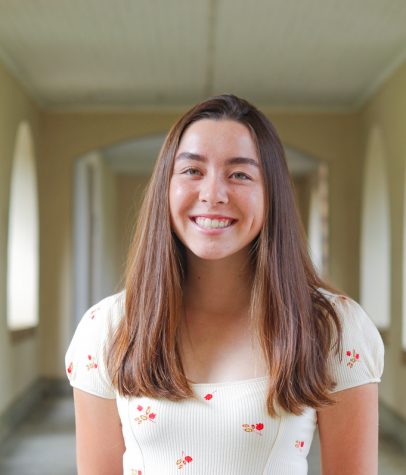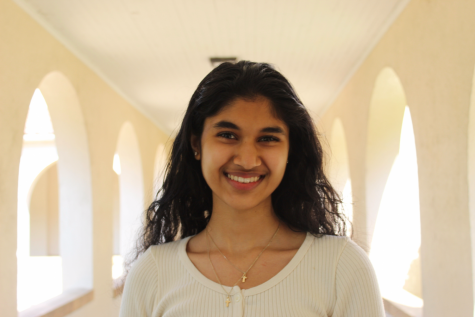Teachers urge Board to put brakes on reopening plan
September 24, 2020

One hundred and twenty seven. That’s how many teachers, parents, and community members lined up in a digital queue Tuesday night to voice concerns regarding the Palo Alto Unified School District’s plans to reopen schools in-person, focusing largely on perceived gaps in communication to teachers and families. Next week, the Board will reconvene virtually to vote on the reopening proposal.
The current plan calls for transitional kindergarten through first grade students to return to in-person instruction on Oct. 12, second and third grade students on Oct. 26, fourth and fifth grade students on Nov. 9, and sixth through twelfth grade students on Jan. 7.
During public comment on the proposal for reopening schools, Teri Baldwin, president of the Palo Alto Educators Association, cited a survey sent to district staff members which showed that 83% of elementary school teachers and 82% of special education teachers did not feel comfortable returning to in-person teaching.
“Of those who said they would be comfortable, it was only on the caveats that we have regular testing, more detailed safety plans or stricter safety measures,” Baldwin said.
Many questions remain unanswered — for example, according to Baldwin, ensuring the air circulation imperative for limiting the spread of the virus on bad air days when smoke would force classroom windows to remain shut.
Following numerous teacher complaints, one common theme was made evident: Teachers did not feel as if they were sufficiently involved in the process of developing reopening plans.
“As our teachers have shared, they were not consulted,” said Meb Steiner, president of California School Employees Association Palo Alto Chapter 301 and a PAUSD special education instructional aide. “Our parents have shared that they were not consulted. Our staff, our special ed aides who work with our students were not consulted. We’ve received last minute directives which have been reversed and plans that were not communicated.”
Steiner also said staff requested the district to survey medical vulnerabilities beforehand, to no avail.
“Instead, we are dealing now with dozens of medical notes and interactive processes of vulnerable employees,” Steiner said. “I urge us to slow reopening, definitely not on the 28th [of September].”
El Carmelo second grade teacher Laurie Beasley said although she was not in the 83% of teachers who responded that they did not want to return, she feels “terrified” at the prospect.
“The transparency of this plan is clearly flawed; the safety of this plan is haphazard, at best,” Beasley said.
According to special education teachers that spoke at the meeting, the district instructed many to return to campus with less than two weeks advance notice, providing insufficient information for them to feel comfortable doing so.
Celeste Thomas, a Futures teacher at Paly, said special education teachers’ questions have been met with “very vague” answers, none that include any clear plan.
“When will I find out my job assignments?” Thomas asked. “When will I know which staff members will be working with our students? Are we prepared to lose staff members because they’re being forced to choose between their family’s health and leave of absences or retirement? Our Futures team is risking each of our families’ health, and the district has proven they do not care about the safety and well being of our Futures teachers and classroom staff.”
Teacher specialists, many of whom interact with groups of students across different sites, expressed apprehension about traveling between classes to provide instruction, potentially jeopardizing the stability of isolated classroom cohorts.
Meg Williams, an English Language specialist at Escondido Elementary school, said she sees multiple classes on a daily basis, across grade levels.
“I’m having a hard time understanding how it can be safe for me and other specialists to cross cohorts without becoming possible super spreaders if we’re required to stay to see students in person,” Williams said.
Subjects such as music, which thrive off of interactive and vocal activities, cannot be taught effectively under the limitations that in-person class would impose, according to elementary music teacher Lisa Sinclair. Upon returning to in-person instruction, Sinclair said, she would be expected to instruct four to five different classrooms, potentially at multiple campuses, and “cross-pollinate with over 50 students daily.”
Though it may be remote, Sinclair said the current method of instruction has allowed for surprisingly successful endeavors in musical learning, whereas upon returning to school, students’ “singing, playing of instruments or movement games that involve student interactions” would all be limited.
“These of course are the tenets of foundational music curriculum,” Sinclair said. “The current delivery of music instruction online, however, does allow for those important learning modalities. This safe and effective model has also had unexpected positive outcomes like one-on-one instruction and deeper forms of assessment. Why is the district planning to assume these health and safety risks in exchange for stunted access to quality curriculum?”
Other teachers voiced concerns that changing from a distance model to a hybrid model mid-semester would disrupt classroom communities and patterns that students are finally beginning to settle into, and advocated for keeping distance and hybrid learners in the same classes.
“I already know which of my kids needs extra support and reading, who struggles in math, who’s shy, who’s having a hard time on Zoom, who’s suffering a family loss,” Kim Powell, a first grade teacher at Nixon, said. “I’ve worked really hard to support my students, and we already are a family and a team. Please don’t take that away from us.”
Still others emphasized that a return to in-person instruction may mean a less efficient schedule due to all of the essential, but time-consuming, safety precautions.
“I feel that I am delivering rigorous quality instruction, and my students are productive and engaged,” said Barbara Lindsey, a 4th grade teacher at Walter Hays. “By disrupting this now in a rush to reopen, I am certain that due to all that necessary health protocols and safety procedures which will consume valuable time during the day and cause stress for everyone, we will be sacrificing already limited instructional minutes and important synchronous time with students.”
Kasper Vroemen was one of a handful of parents who spoke in favor of reopening schools in person soon. Vroemen, who argued for an even more accelerated reopening of secondary schools, said schools have not been shown to be hotbeds of virus transmission and pointed to declining case rates in Santa Clara County.
“We know very well how to minimize COVID-19 transmission and … the likelihood of getting infected in school,” Vroemen said. “Anxiety among teachers, parents and students is real, but not rational, and we refuse to look at data proving safe school operations.”
At the conclusion of the meeting, Board members acknowledged teachers’ concerns, and said that they would return to vote on the reopening plan in a special meeting planned for Tuesday.
“I do think that our staff has made an effort to create a clear safety plan and put it out, and for whatever reason, there are many teachers that don’t feel like they know what it is,” board member Jennifer DiBrienza said. “But clearly, we need to keep working at it.”
With the Board’s reopening dates looming, board member Ken Dauber proposed waiving the two-meeting rule, a Board policy that requires items to be discussed over two public meetings before undergoing a vote, to allow the board to make a decision on the reopening plan in the moment.
“I don’t think it’s fair to anybody to wait until less than two weeks before to implement this plan after we adopt it,” Dauber said. “If there was any doubt that we were going to actually adopt this plan, it might make sense to wait and have another discussion, but … I haven’t heard any board members suggest that there’s some alternative out there that makes sense that anybody would support. So there’s no benefit to waiting to do that, except to continue to create … a real cost, which is prolonging the uncertainty.”
The motion to waive the two-meeting rule did not pass, with all other board members voting against it, and President Todd Collins abstaining.
“I think we owe it to the parents who are going to make decisions to send their kids back or go to full distance, if there are unanswered questions that are impeding their ability to make that decision that could get answered,” Vice President Shounak Dharap said. “That certainly warrants another meeting’s worth of time for those changes to be made.”
The board will reconvene virtually at 5:30 p.m. on Sept. 29 to continue the discussion on reopening plans and vote on the proposal. Connection information will be available on the Board website, under the meeting agenda, starting 72 hours prior to the meeting.



